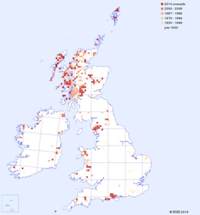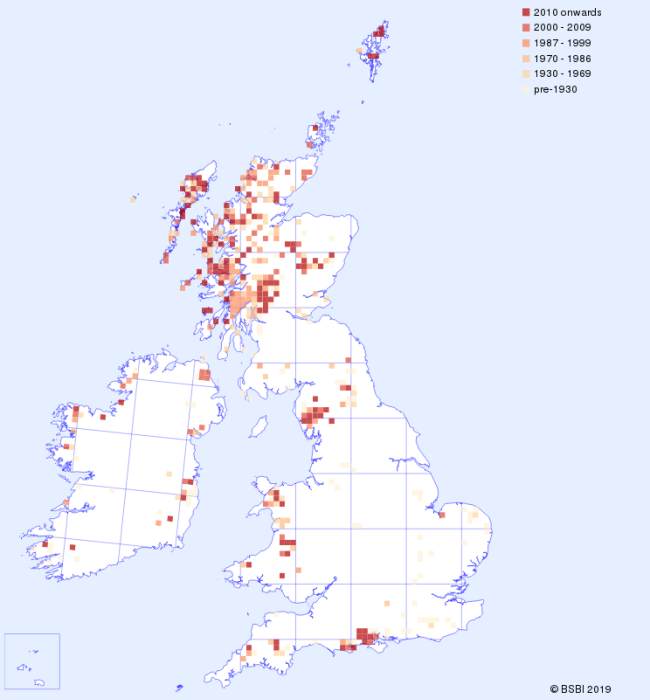Three things make this orchid very difficult to find: its size, which is diminutive; its colour, which enables it to blend in perfectly with its surroundings; and the fact that it grows in somewhat inhospitable (to us at least) habitats. As its common name suggests the Bog Orchid grows in very boggy conditions, although not stagnant ones; it requires not only soil which is wet throughout the year but also seasonal flushes creating some movement in the water. Hammarbya paludosa is more common in Scotland than in other parts of Britain, where it appears in scattered and very localised colonies. In Britain the Bog Orchid is classified as Nationally Scarce, and it is a protected species in both Ireland and Northern Ireland. This orchid flowers from late June until late September. On mainland Europe the range of Hammarbya paludosa extends from Scandinavia in the north to France and Italy in the south, and eastwards to Romania.
| Distribution Map | Key Features | |
 |
Records for the Bog Orchid from BSBI are shown on the map with most recent in front. (Hover the mouse over the small map to expand it.) |
Plant: between 2 and 15cm in height but usually between 4 and 8cm. Stem yellowish green and angled, emerging from a small pseudobulb at the base of the plant, which is sometimes covered with leaves and partially submerged in the boggy ground around it. |
Image Gallery for Bog Orchid Hammarbya paludosa
| Pollination | Taxonomy & Hybrids |
The flowers produce nectar, which rewards visiting gnats and small flies. The leaves are often fringed with tiny bulbils, which eventually fall to the ground. If infected with a specific fungus the bulbils germinate and grow into small plants, creating groups around the parent plant. |
The specific name paludosa means 'growing in boggy ground'. |
Articles about Bog Orchid in JHOS
